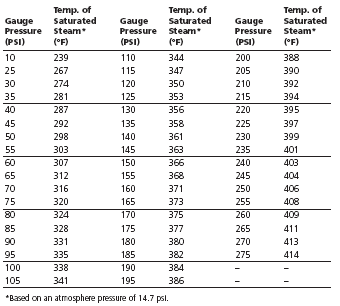
Steam Hose Selection Factors

| Phone (937) 558-2497 Fax (937) 698-1247 |
| There are many facts that have to be known about an application before a steam hose can be specified. Some of the most important considerations are: Steam pressure Steam temperature Whether the steam is superheated or saturated Magnitude of surges in temperature or pressure External conditions where the hose will be used How often the hose will be used Duration of each use How long the hose will be idle Whether manual handling will be required |
| It is helpful to read the lay line on steam hose. Every hose designed for steam use should be marked with the manufacturer's name, hose type and operating pressure. If this information is not visible on the lay line, don't use the hose for steam. Many steam hoses are also date-coded with the date of manufacture. This information helps spot hoses that should be replaced due to age. While many industrial hoses have a built-in safety factor of 4:1 (they can withstand pressures four times greater than the rating on the cover), steam hoses have a minimum safety factor of 10:1, per standards of the Rubber Manufacturers Association. This factor emphasizes the extreme dangers present with steam use. A hose should never be used to carry pressures higher than it is rated to handle, in spite of the safety factor. Hose couplings are extremely important when steam is being handled. The potential for serious injury is significant if a coupling blows off under pressure. |
| High temperatures and pressures inside steam hose act like a pressure cooker and cause the inside and outside diameters to shrink during use. Couplings must be specifically designed to combat this effect. Only couplings designed for steam hose should be used, because they include several crucial features: Proper material for steam, usually plated steel Bite-the-wire permanently attached coupling or Bolt on clamp, which can be re-torqued repeatedly Ground-joint connection to avoid static charge buildup Strength to resist slippage due to hose shrinkage |


Ohiocraft Industrial Products P.O. Box 81, West Milton, Ohio 45383 Phone: (937) 558-2497 Fax: (937) 698-1247

